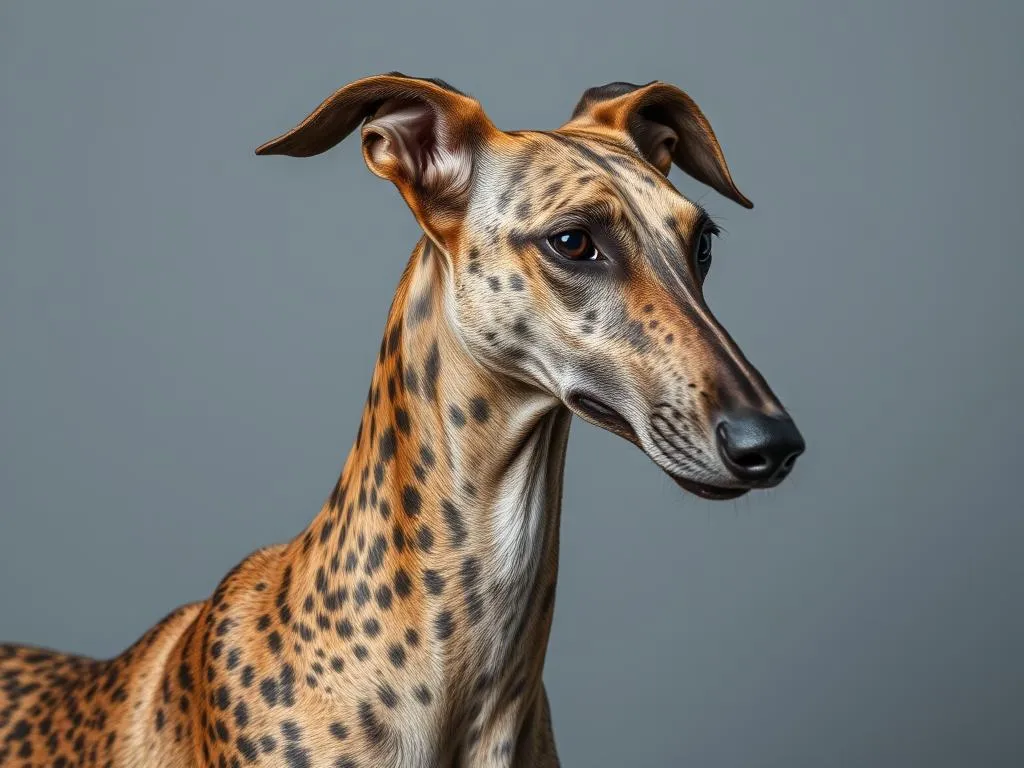
Greyhounds are one of the most fascinating dog breeds, captivating the hearts of many with their incredible speed and gentle demeanor. Historically bred for racing, Greyhounds have also become beloved family pets. Understanding this breed is essential for prospective owners, as their unique traits and needs can greatly influence their suitability for various lifestyles.
History of the Greyhound
Origins
The Greyhound has ancient roots, tracing back thousands of years to civilizations such as Egypt and Greece. These dogs were prized for their speed and hunting abilities, often used to chase game. In ancient paintings and artifacts, you’ll find depictions of these elegant dogs, showcasing their significance in society.
Evolution of the Breed
As time progressed, the Greyhound underwent various breeding practices that shaped its characteristics. The breed was refined to enhance its athleticism and speed, making it a favorite in hunting and, later, in dog racing. The combination of natural instincts and selective breeding has resulted in the modern Greyhound we know today, known for its sleek physique and unique agility.
Physical Characteristics
Size and Weight
A typical Greyhound stands between 28 to 30 inches tall at the shoulder and weighs around 60 to 70 pounds. Their size can vary slightly, but they generally fall within this range. When compared to other dog breeds, Greyhounds are taller and leaner, giving them a unique stature that emphasizes speed.
Coat and Color
The Greyhound has a short, smooth coat that requires minimal grooming. Its coat texture is sleek and lies flat against the body. Common color patterns include fawn, black, brindle, and white, often with various markings. This variety adds to their visual appeal and makes each Greyhound unique.
Distinct Features
One of the most distinguishing features of the Greyhound is its streamlined body. Their long legs and deep chest contribute to their extraordinary athleticism, allowing them to reach speeds up to 45 miles per hour. This unique physical structure not only aids in racing but also contributes to their graceful appearance.
Temperament and Behavior
General Temperament
The Greyhound is known for its gentle and laid-back demeanor. They are often described as affectionate and friendly, making them excellent companions. While racing Greyhounds may exhibit a more energetic behavior due to their training, retired racing dogs typically adapt well to a home environment, often becoming couch potatoes.
Socialization Needs
Early socialization is crucial for a Greyhound to ensure they grow into well-rounded pets. Exposure to various people, children, and other animals can help them develop confidence and reduce anxiety. Greyhounds are generally good with children and can coexist peacefully with other pets, although their prey drive may necessitate supervision around smaller animals.
Exercise and Activity Level
Despite their reputation as racing dogs, Greyhounds do not require excessive amounts of exercise. A couple of short walks and some playtime in a secure area are usually sufficient. They enjoy sprinting, but they also appreciate moments of relaxation. Activities such as lure coursing or playing fetch can be great ways to keep them stimulated.
Health Considerations
Common Health Issues
Like all breeds, Greyhounds are prone to certain health issues. Common problems include bloat, hip dysplasia, and heart conditions. Regular veterinary check-ups can help monitor their health and catch any potential issues early.
Lifespan
The average lifespan of a Greyhound is around 10 to 14 years. Factors such as genetics, diet, and overall care can significantly influence their longevity. Providing a healthy lifestyle, including regular exercise and a balanced diet, can contribute to a longer, happier life.
Regular Veterinary Care
Routine veterinary care is essential for maintaining a Greyhound’s health. This includes vaccinations, parasite prevention, and dental care. Regular check-ups can help identify any health concerns before they become serious issues, ensuring your furry friend remains happy and healthy.
Training and Care
Basic Training Needs
Training a Greyhound can be a rewarding experience. Positive reinforcement methods work best, as these dogs respond well to encouragement and praise. Key commands such as sit, stay, and come are essential for safety and developing a strong bond with your pet.
Grooming Requirements
Grooming a Greyhound is relatively straightforward due to their short coat. They require occasional baths and brushing to remove loose hair and keep their coat healthy. Nail trimming and dental care should also be part of their grooming routine to maintain overall health.
Nutritional Needs
A balanced diet is crucial for a Greyhound to thrive. High-quality dog food formulated for their size and activity level is recommended. Portion control is important, as Greyhounds can be prone to obesity if overfed. Consulting with a veterinarian about dietary needs can help ensure your dog maintains a healthy weight.
Adoption and Rescue
Choosing to Adopt a Greyhound
Adopting a retired racing Greyhound can be a fulfilling experience. Many of these dogs are in need of loving homes and can make wonderful companions. There are common misconceptions about ex-racers, such as them being overly energetic or difficult to train, but many adapt quickly to family life.
Finding a Greyhound Rescue
There are numerous reputable Greyhound rescues across the country. These organizations dedicate their efforts to finding homes for retired racers and educating the public about the breed. Researching local rescues and attending adoption events can help you find the perfect match.
Transitioning to a Home Environment
Transitioning a Greyhound to a home environment requires patience and understanding. Providing a safe and comfortable space, along with gentle guidance, can help them adjust. Introducing them gradually to household routines and family members can ease the process and make them feel more secure.
Greyhounds in Popular Culture
Greyhounds in Media
Greyhounds have been featured in various media forms, including films, books, and advertisements. Their graceful appearance and gentle nature often make them a popular choice for filmmakers and authors looking to capture the elegance and charm of dogs.
Advocacy and Awareness
There are numerous organizations dedicated to raising awareness about Greyhound adoption and welfare. These groups work tirelessly to promote responsible ownership and the importance of adopting retired racers, highlighting the joys and responsibilities that come with it.
Conclusion
In summary, Greyhounds are an extraordinary breed that combines speed, grace, and a gentle temperament. Their history as racing dogs has shaped their unique characteristics, making them both athletic and affectionate companions. Understanding their needs and traits is vital for anyone considering bringing a Greyhound into their home. With the right care, training, and love, these dogs can bring immense joy to their owners and become cherished family members.









